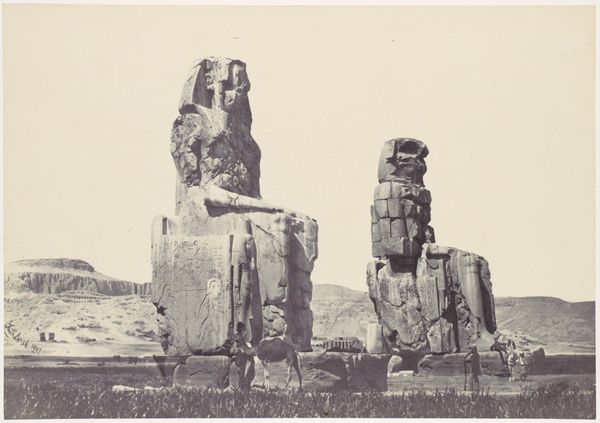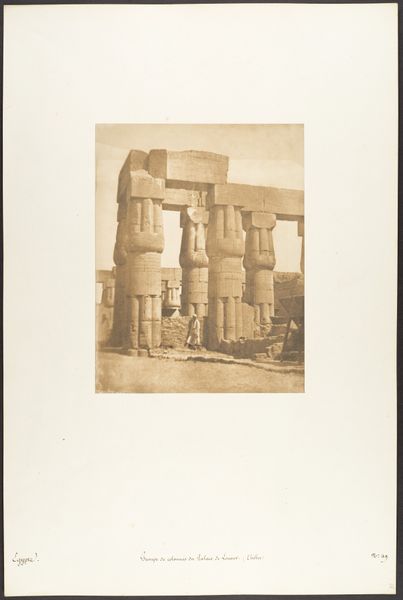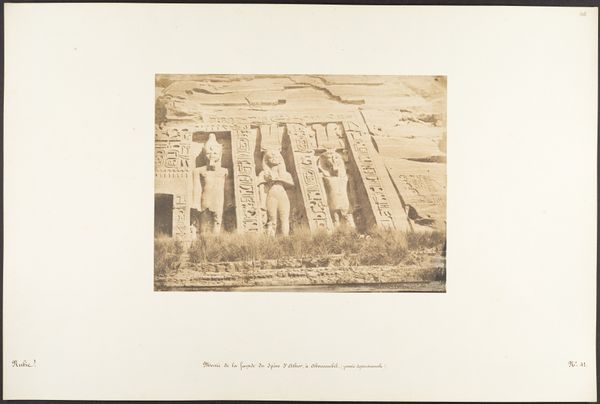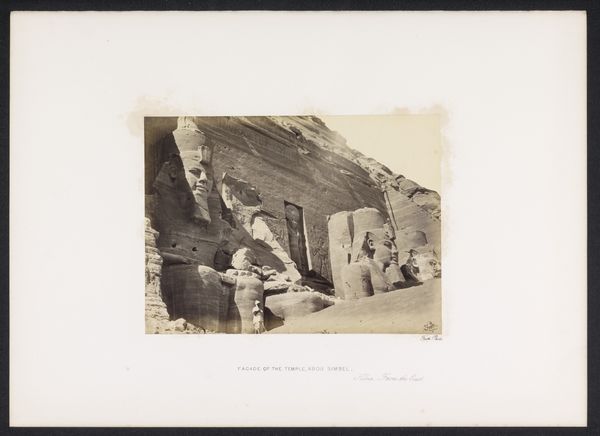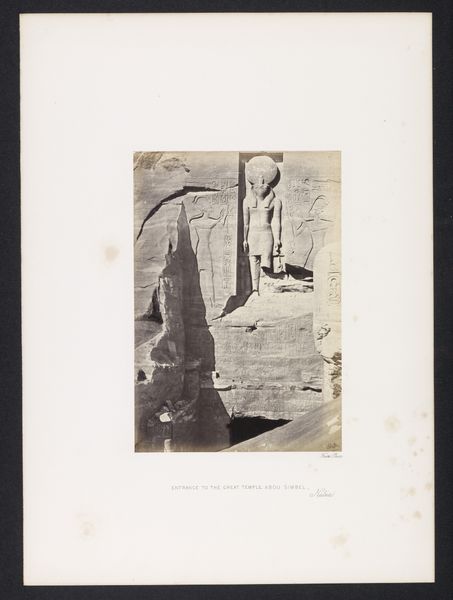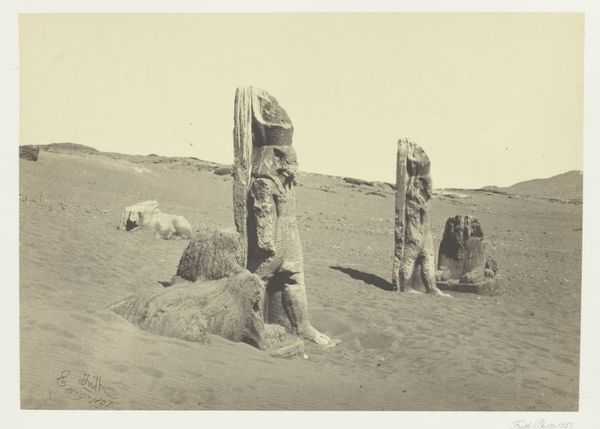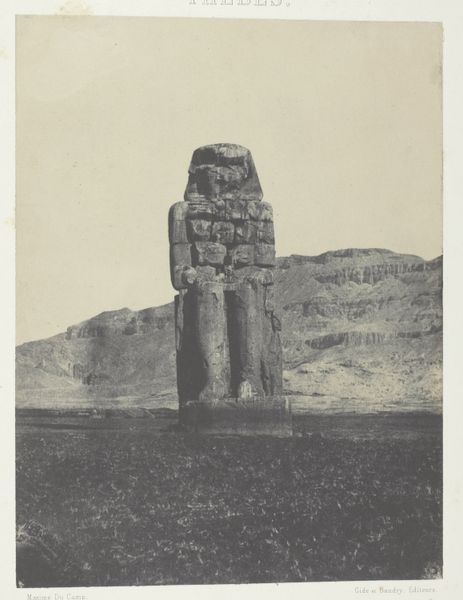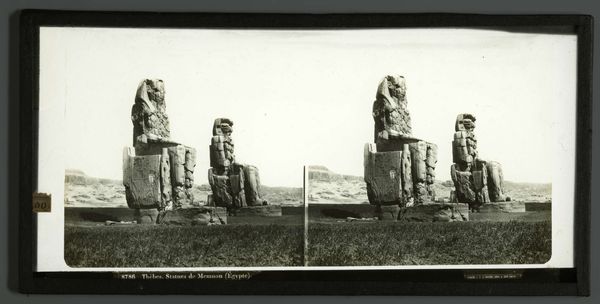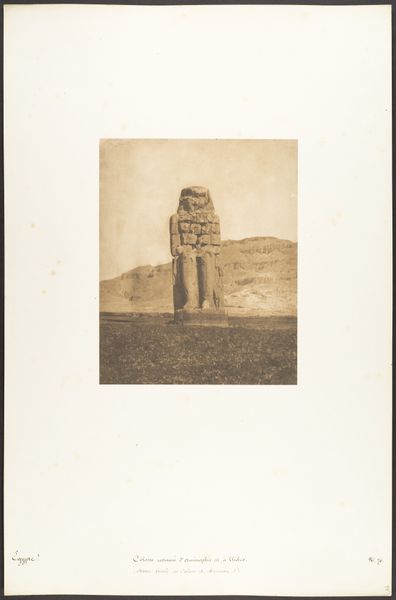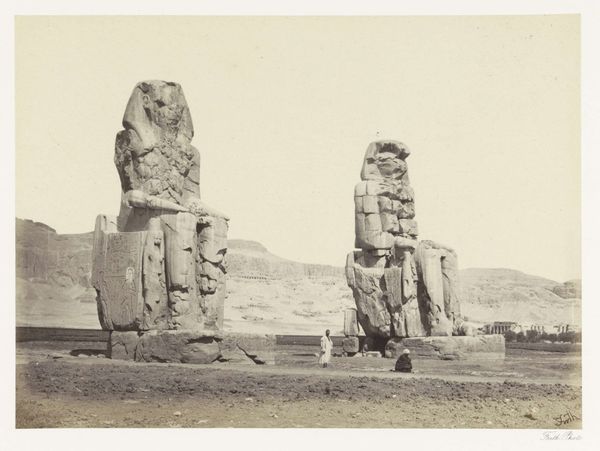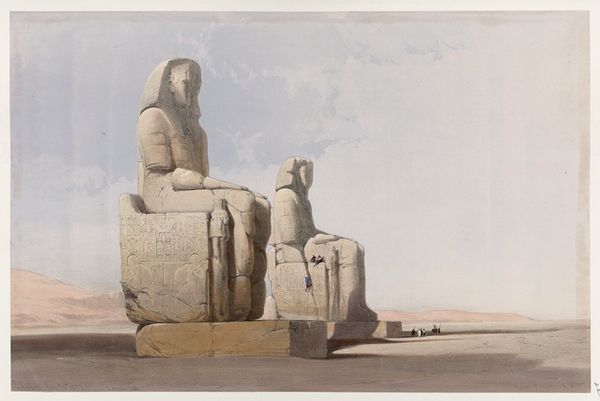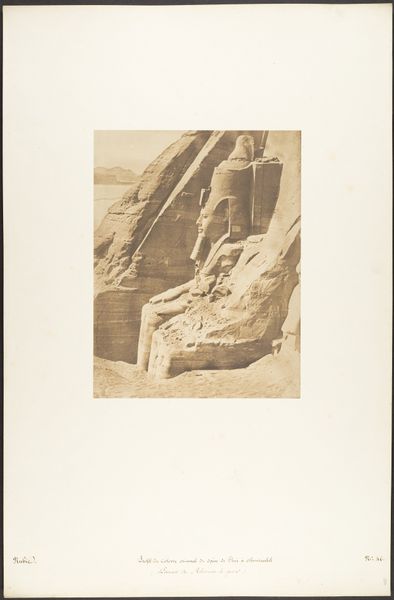
Vue des deux colosses de l'Aménophéum, à Thèbes 1849 - 1850
0:00
0:00
photography, sculpture, site-specific, gelatin-silver-print
#
landscape
#
ancient-egyptian-art
#
photography
#
ancient-mediterranean
#
sculpture
#
site-specific
#
gelatin-silver-print
#
realism
Dimensions: Image: 6 1/8 × 7 7/8 in. (15.5 × 20 cm) Mount: 12 5/16 × 18 11/16 in. (31.2 × 47.5 cm)
Copyright: Public Domain
Curator: This gelatin-silver print from 1849-1850 by Maxime Du Camp depicts the Colossi of Memnon at Thebes. I’m immediately struck by the texture, almost fossil-like. It evokes a profound sense of antiquity. Editor: Indeed. The photographic medium emphasizes the ruinous quality, lending the statues an almost ghostlike presence within a flattened perspective. The original purpose of the statues was of a grand nature, but seeing the damage, I'm thinking about power. Curator: Absolutely. And thinking about the statue’s symbols, in this setting, that feels apt. This was taken relatively early in photography's history, think about the choices made by Du Camp when he was looking through his viewfinder: here's a colonizer who decides how history would be seen forever. Editor: As iconography, the image operates on several levels. There’s the obvious reference to ancient Egypt. Colossi usually flank temples, symbolizing protection and divinity, what kind of statements are being made here when these protections are exposed this way? Curator: And as objects of colonialism, the photograph also freezes in time the West's fascination with and also, in many ways, domination over Egyptian history and culture. They’ve literally become aesthetic objects to gaze at. Who benefits from freezing this power? Editor: Right. Consider the shift in function—from symbols of the Pharaoh's divine authority to monuments signifying Western dominance. Curator: But, of course, Du Camp was traveling and documenting with Gustave Flaubert at a time of intense French colonial interest in Egypt. Their trip can be viewed as inherently tied to political agendas of its era. And for whom was this photographic endeavor undertaken? Editor: The very act of capturing and disseminating the images underscores the power dynamics at play. It is visual ownership, isn't it? I wonder about the original reactions, were there many? How did they impact visual representation of the region, do you think? Curator: It established a certain orientalist vision, emphasizing the monumental while possibly overshadowing contemporary Egyptian voices and realities. I think we continue to contend with the impact to this day. Editor: Thinking about the cultural legacy visualized, I'm reminded about the impact still experienced through those colonial structures in arts production and artmaking in general. Thank you.
Comments
No comments
Be the first to comment and join the conversation on the ultimate creative platform.

